

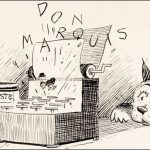
I believe that animation and comic strips go hand in hand historically. The origins and success of early animation is directly correlated with the world of newspaper and editorial cartooning. And just as animation is directly to comics, comics are directly correlated to the world of book illustrations. Many cartoonists famously illustrated books, as did some animation giants. One famous example of a comic strip artist doing book illustrations is The Life and Times of Archy & Mehitabel, with illustrations by George Herriman from Don Marquis’s poems and stories originally printed in the New York Evening Sun.
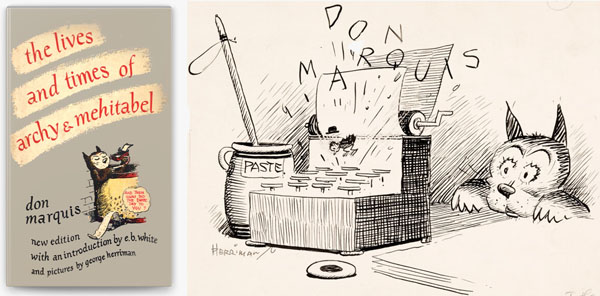
Some animation artists also worked in children’s books. Bill Peet is the most famous example. He was already popular while working at Disney’s.
Three famous animation talents who worked in book illustrations were Walter Lantz, Ben “Bugs” Hardaway, and Grim Natwick.
Grim Natwick was no foreign name to the world of art when he entered the animation industry. Natwick already had an incredibly extensive career doing sheet music illustrations. Charlie Judkins talks about Natwick’s sheet music work here. In 1929, Natwick did the illustrations for Will Rogers’s book Ether and Me or “Just Relax”. Herbert Johnson of the Saturday Evening Post did the dust jacket cover.
At this time, Will Rogers was the biggest star in the world and had appeared in movies, vaudeville shows, and had regular columns in the New York Times and Saturday Evening Post. Ether and Me republished his Saturday Evening Post “scribblings” in hardcover format. The book reprints a humorous tale first printed in a 1927 SEP article in which Rogers recounts his experiences in the American healthcare system and his eventual gall bladder surgery.
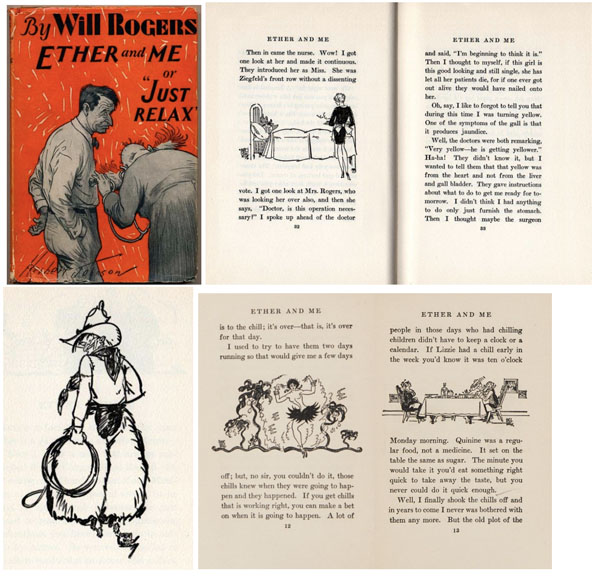
In 1921, Walter Lantz lent his talents to illustrate Rummyniscences by Frederick P. Kafka.
Prohibition had only been enacted a year earlier, and this book humorously took a look at life when alcohol was legal. Lantz’s life during Prohibition is discussed at length in his biography The Walter Lantz Story by Joe Adamson. In the book Lantz, is quoted saying, “It’s a miracle anybody’s alive, with the stuff we used to drink in the Prohibition era. We would all chip in for a gallon of grain alcohol, put it in a five-gallon jug, put about two gallons of water to it, and some juniper berries and orange extract, shake the bottle, and the party was ready.”
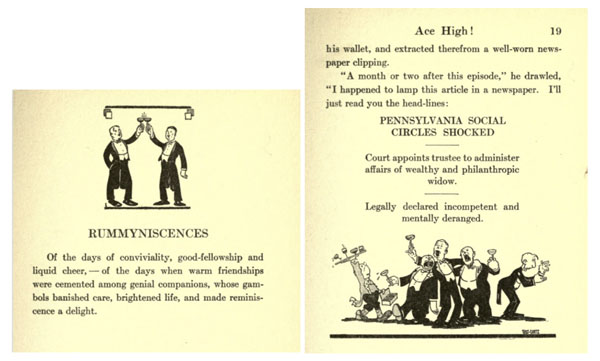
Around 1921, Benjamin “Bugs” Hardaway illustrated Boomer Jones. The book was printed by the Burton publishing company of Kansas City, MO. Hardaway was a Kansas City native and worked at the Kansas City Film Ad Company for several years until moving from Missouri to Hollywood to work at the Ub Iwerks Studio.
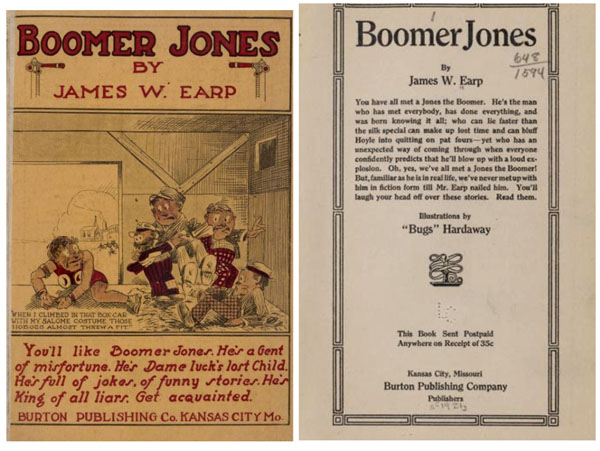
Boomer Jones was a character created by James William Earp. James W. Earp was born in 1888 in Clarence, Missouri. Earp was a railroad worker in the state of Missouri for his entire working life, working at the Rock Island Railroad Company in Kansas City from 1912 to his retirement in 1956. He served in WWI as a member of the Company C 68th Engineers, and with the 58th Company Transportation Corps in France. During the war, he wrote for the Camp Garrett Camouflage and briefly for Stars and Stripes.
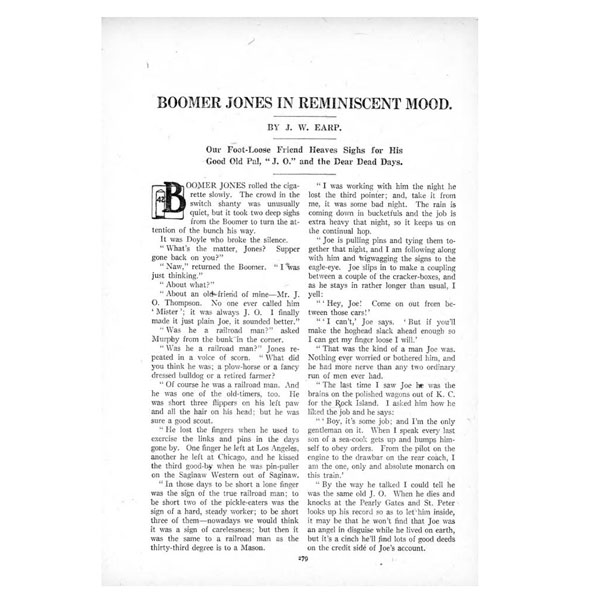
A page by James W. Earp for Railroad Man’s Magazine in 1918
Outside of his railroading career, Earp was a writer of short stories. While his range was broad, he was most specialized in stories involving railroads. He submitted stories to True Confessions anonymously during the 1920s and 30s about romance and heartbreak and wrote for War Stories, Railroad Magazine, and other publications. Boomer Jones was a character that played a key role in his railroad stories dating before this book was printed.
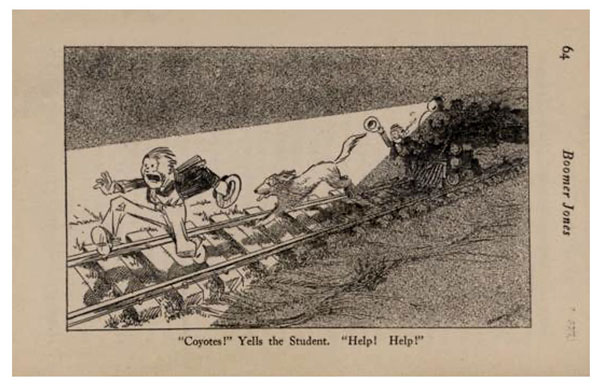
Sources: The biography of James W. Earp was sourced from The State Historical Society of Missouri Research Center in Kansas City’s archival finding aid of Earp’s papers. The excerpts of Boomer Jones comes from the Library of Congress. The excerpts of Rummyniscences come from the University of California’s HathiTrust. Ether and Me came from various online scans (Google Books, Michael Sporn’s Splog, and the Internet Archive).
Other animation artists whose talents eventually led to work book illustrations were Chuck Jones, Andreas Deja, Glen Keane, and Willie Ito.